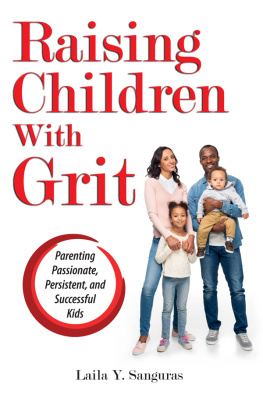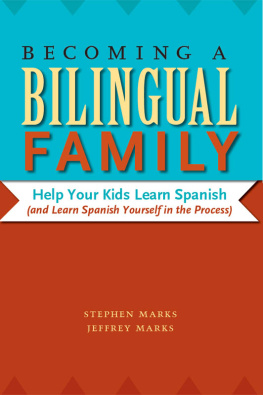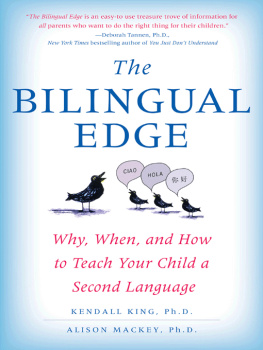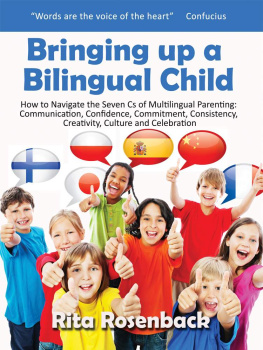Thank you for downloading this Atria Books eBook.
Join our mailing list and get updates on new releases, deals, bonus content and other great books from Atria Books and Simon & Schuster.
C LICK H ERE T O S IGN U P
or visit us online to sign up at
eBookNews.SimonandSchuster.com
We hope you enjoyed reading this Atria Books eBook.
Join our mailing list and get updates on new releases, deals, bonus content and other great books from Atria Books and Simon & Schuster.
C LICK H ERE T O S IGN U P
or visit us online to sign up at
eBookNews.SimonandSchuster.com

A Division of Simon & Schuster, Inc.
1230 Avenue of the Americas
New York, NY 10020
www.SimonandSchuster.com
Copyright 2014 by Maritere Rodriguez Bellas
All rights reserved, including the right to reproduce this book or portions thereof in any form whatsoever. For information address Atria Books Subsidiary Rights Department, 1230 Avenue of the Americas, New York, NY 10020.
First Atria Books ebook edition September 2014
ATRIA BOOK and colophon are trademarks of Simon & Schuster, Inc.
The Simon & Schuster Speakers Bureau can bring authors to your live event. For more information or to book an event contact the Simon & Schuster Speakers Bureau at 1-866-248-3049 or visit our website at www.simonspeakers.com.
ISBN 978-1-4767-5325-6 (eBook)
To my parents, who encouraged and supported my love of other languages
Communicating in many languages allows you to really get to know people from other cultures and, it allows them to get to know you! Raising our children bilingual or even tri-lingual, is a gift.
Maria Celeste Arrars, Emmy Awardwinning television producer and host, author, and mother of three
Contents
Foreword
Renowned for its unparalleled tradition of immigration, the United States boasts tremendous linguistic diversity, particularly in urban areas. Indeed, linguists have identified New York City as one of the most linguistically diverse places on earth.
Yet despite the millions of immigrants who have streamed intoand continue to stream intothe United States, an English-only ideology and the desire to assimilate tends to prevail. This results in the disappearance of multilingual capability across immigrant generations.
In fact, immigrant parents seeking to ensure that their children grow up to be proficient in both English and their native language(s) face many challenges. This is true on a broad social level (for instance, in terms of the English monolingualism in American public schools). Its also true on a microlevel where hurdles can range from a lack of multilingual resourcessuch as books and DVDsto resistance from children who want to use English all of the time at home.
Raising Bilingual Children is specifically designed to help immigrant parents who wish to pass on their linguistic heritage to their children. The book offers readers direct insight into the experiences of other immigrant parents who share the expertise theyve gained raising their own children as multilinguals. It provides useful feedback and advice from language experts as well.
Organized chronologically, following the growth of children from infancy to the teenage years, Raising Bilingual Children provides parents with many valuable tips and insights into succeeding at what stands as an extremely rewarding but also challenging endeavor: helping their children achieve and maintain long-term fluency in both English and their own native language(s).
Christof Demont-Heinrich, language and culture researcher; associate professor, Media, Film and Journalism Studies, University of Denver; and parent of two bilingual children
Introduction
For most immigrant parents, raising bilingual children is not a choice or a decision, but rather a way of life. Whether our native language is Spanish, Filipino, Korean, Chinese, or French, we all want our children to communicate in the language we were born with and we all want to instill in them the love of our native language. After all, we want them to be able to travel back to our place of origin and speak with the family that stayed behind. We want them to know where we come from, and language is a big part of that knowledge. As writer Rita Mae Brown once said, Language is the road map of a culture. It tells you where its people come from and where they are going. For the immigrant parent, this is more than just a catchy saying. It becomes a fierce desire:
I am from Spain but my husband and I are raising our children in California. As important as it has been for us that our children embrace the English language, it has been paramount that they are fluent in Spanish. My family back home, they dont speak English. We want the children to be able to communicate with their grandparents and other family members.
Mireia, mother of three children
But in todays America, the desire to teach our children our native language is often secondary to making sure they are proficient in English so that they can thrive in school and reach leadership positions in the workplace. We want our children to knock down every barrier that might be in their way, and to succeed beyond measureand we know that a command of English is a necessary foundation for this kind of success. What this means is that we have two competing desires, two deep wishes around language learning. But the task of teaching two (or more) languages at home can be so overwhelming that sometimes we are intimidated by what steps to take or even where to start.
Raising Bilingual Children is an easy, user-friendly, how-to guidebook for the immigrant parent who is committed to raising children in two or more languages. It is designed to work with your busy life, offering a quick way to search for advice and direction about the everyday joys and challenges of raising a bilingual child. It will provide answers to questions such as:
What do I do when my five-year-old doesnt want to speak Spanish at home?
My husband doesnt speak Japanese, so how do we find common ground to raise our kids with two languages?
My child is two years old and not speaking in either of the two languages we speak at home. Should I be concerned?
In addition to helping you find answers to your most immediate questions, Raising Bilingual Children also offers stories from parents, who share their ideas and experiences; interviews with the kids from these families, who give us insight into what it feels like to be in their shoes; opinions and suggestions from experts in the field; comments from renowned personalities who have benefited from being bilingual; and links and resources for finding out more information on a wide range of topics.
I hope it inspires you to start and to continue the effort of raising a bilingual child. Languagewith all of its magnificent complexityis one of the greatest gifts we give our children, says Bruce D. Perry, MD, PhD, in an article published on Scholastic.com. Yet, we so often treat our verbal communication with children in a casual way. It is a misconception that children learn language passively. Language acquisition is a product of active, repetitive, and complex learning. The childs brain is learning and changing more during language acquisition in the first six years of life than during any other cognitive ability he is working to acquire. How much easier this learning process can be for children when adults are active participants!
My Story











